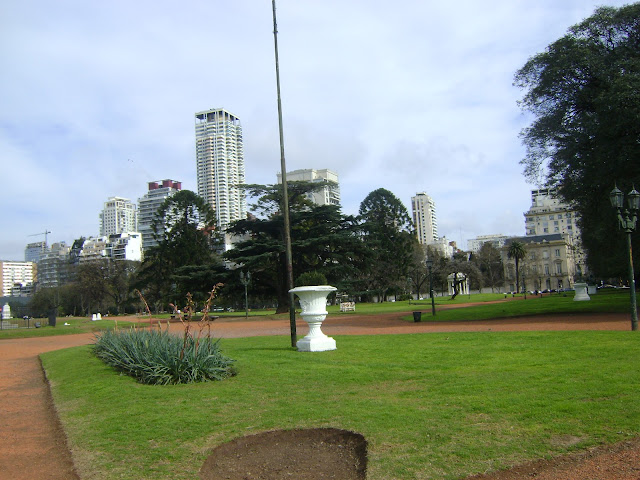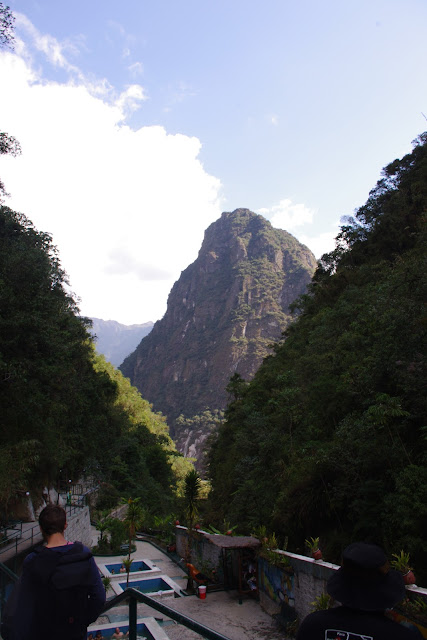We arrived in Buenos Aires last Sunday and have been spending the week at orientation, which is really just a million tours of the city. This has been nice, but organized tours can be a little boring sometimes. The city is divided into several distinct neighborhoods that include San Telmo, Recoleta, Palermo, La Boca, Downtown, and Congreso. Obviously there are more but these are the ones I am familiar with now. The neighborhoods range from really modern, sleek highrises to cobbled stone streets and questionable electricity.
Buenos Aires has a ton of public plazas and parks that celebrate their heros - historical and political. Big ones being Evita, San Martin and Leloir. It makes for a nice break up of the bustling street traffic, but can make getting around a little difficult.
San Telmo, is Buenos Aires' oldest neighborhood and is noted to still have cobbled stone streets, but we came across these in other neighborhoods as well. But the buildings in San Telmo did have their own old world charm. Characterized by the colonial style of the buildings, they all go right up to the sidewalk and then once you enter it opens up into courtyards.
This one that we stopped at opened onto several courtyard lined from front to back and was two stories. The building was occupied by several shops and boutiques. The San Telmo neighborhood is well known for its tango bars, restaurants and coffee shops.
The La Boca neighborhood is right on the harbor and is historically where all of the shipyard workers lived. It is now occupied by a vibrant arts community but is very local heavy and not very tourist heavy. It is also home to Boca Juniors, Buenos Aires' championship soccer team.
The buildings in La Boca are very colorful and bright, many of them sided with corrugated metal that was discarded by ships in the harbor and repurposed by residents. The water is super polluted and did not smell good at all.
Many of the buildings that were non-residential were industrial style buildings, but didn't really seem to be in use anymore. But that may not be true because I have still yet to figure out when people work here.
We did a bike tour where we rode from Palermo, where I live, to the Universidad de Buenos Aires to see the architecture school. We tried to mainly ride through the park areas because the streets of Buenos Aires are still not friendly to bicyclists.
View of downtown across the park.

































